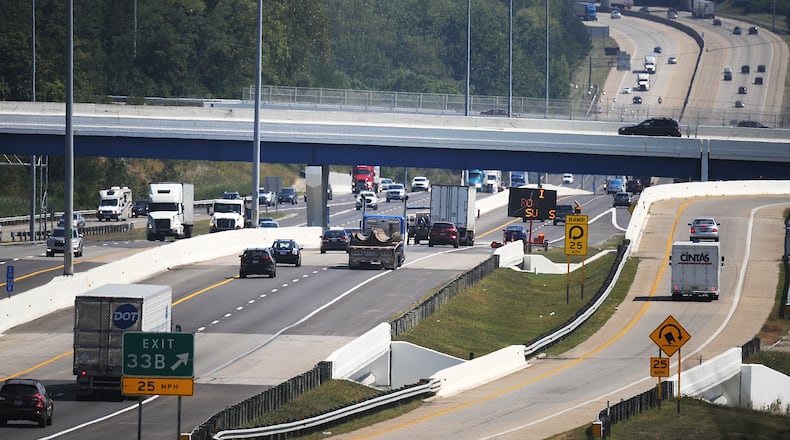While traffic decreased 15% from February through July, when much in Oho was shutdown, the number of people driving more than 80 mph on Ohio roads jumped by 30%, according to sensor data analyzed by the state Department of Transportation.
As of Aug. 31, there have been 4,700 traffic stops in Montgomery County, according to Ohio State Highway Patrol data. Troopers cited 58 people for driving more than 100 miles per hour between Jan. 1 to Aug. 31.
In that same time period last year, 39 people were cited for driving more than 100 miles per hour.
“People seem to have the preconception that we won’t pull them over during the pandemic, which isn’t true,” said Trooper Jessica McIntyre, Ohio State Highway Patrol public information officer for southwestern Ohio. “You have to abide by the laws. If you’re not, we’re going to be out there enforcing them.”
In Greene County, there have been nearly 3,500 traffic stops this year. In all of 2019, Ohio State Highway Patrol made about 5,500 stops in Greene County.
Thirty-three people were cited in Greene County for driving more than 100 miles an hour this year. In Clark County, troopers cited 47 people for driving more than 100 miles an hour.
Nearly 200 people were cited for driving over 100 miles per hour in Warren County so far this year. Last year in Warren County, 71 people were cited for driving that fast.
Ohio authorities are especially troubled that speeds not only picked up in the early days of the pandemic when roads were emptier, but they’ve also continued even as the state reopened and roads became more congested.
“We’ve seen people continue to go those speeds even though there now is more traffic, which makes it even more dangerous,” Lt. Craig Cvetan, an Ohio patrol spokesman, told the Associated Press.
July was Ohio’s deadliest traffic month since 2007, with 154 fatalities, the Associated Press reported.
A temporary reduction in traffic enforcement in the early days of the pandemic may have contributed to a sense of invulnerability by some drivers. Some Ohio police agencies — though not the patrol — eased up on pulling drivers over for minor traffic violations to avoid spreading the coronavirus.
In addition, Ohio troopers were spread thin for several weeks as they were called on to help distribute food and later provide security as protests over police brutality and racism erupted following the death in May of George Floyd in Minneapolis.
“When people see less troopers on the roadway or they see less law enforcement out working, there is that tendency for them to start committing traffic violations,” Cvetan said.
Ohio is not the only state that has seen more drivers travelling at faster speeds. The Iowa State Patrol recorded a 101% increase from January through August over the four-year average in tickets for speeds exceeding 100 miles per hour, according to the Associated Press.
Utah state police saw a 23% jump in tickets issued for going 20 miles per hour or more over the speed limit from March through August compared with the same time period last year. In Pennsylvania, patrol tickets for drivers exceeding 100 mph climbed in March but then stayed high from June through August, jumping 25% during that three-month period, AP reported.
McIntyre said when people drive that fast, they have less control over their vehicle.
“You’re putting your life on the line as well as the other drivers around you,” McIntyre said. “Slow down. Ohio’s interstates are not a race track.”
People cited for driving more than 100 miles per hour by the Ohio State Highway Patrol from Jan. 1 to Aug. 31:
77 - Butler
47 - Clark
1 - Darke
33 - Greene
55 - Miami
58 - Montgomery
5 - Preble
197 - Warren
About the Author

